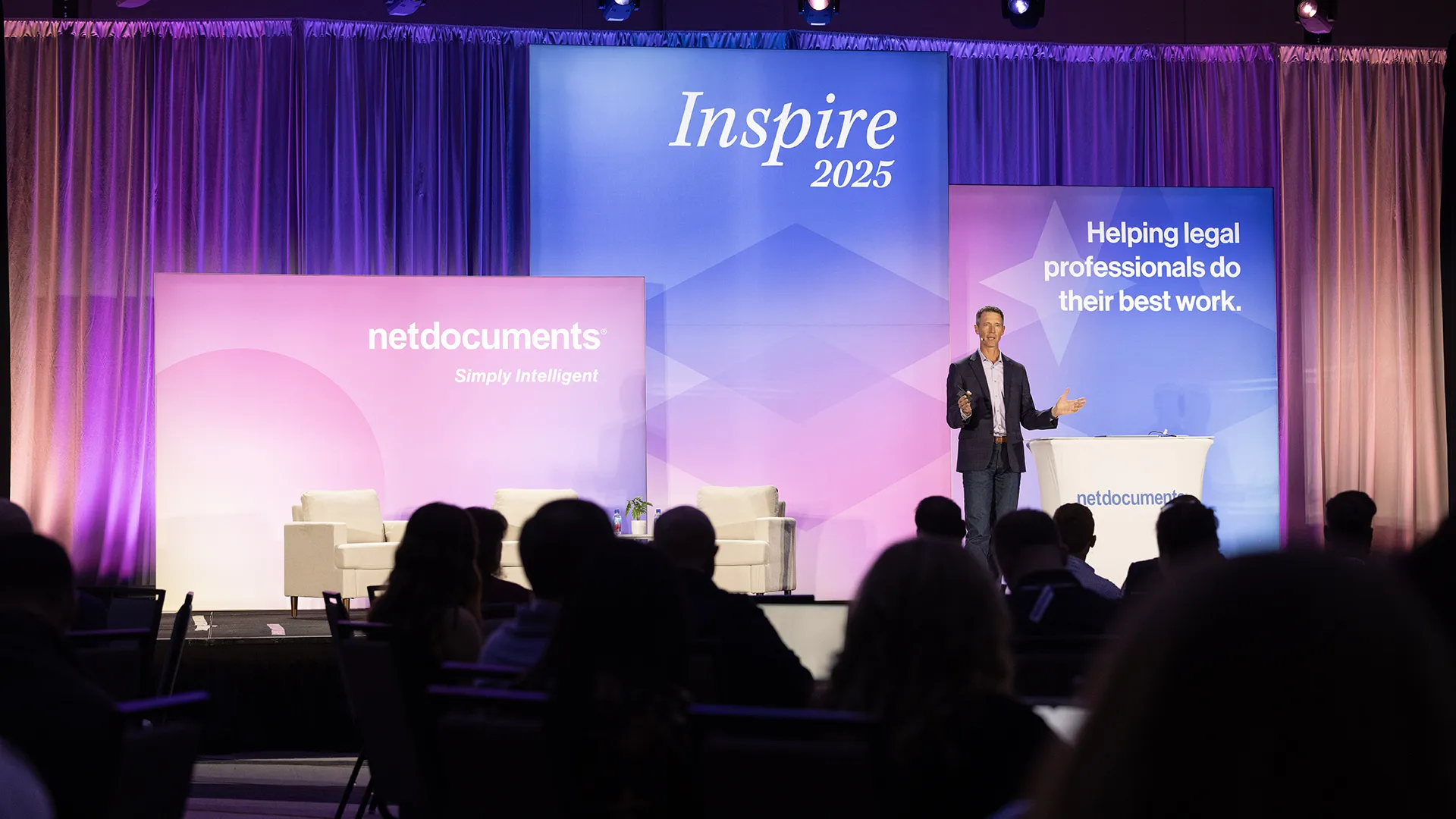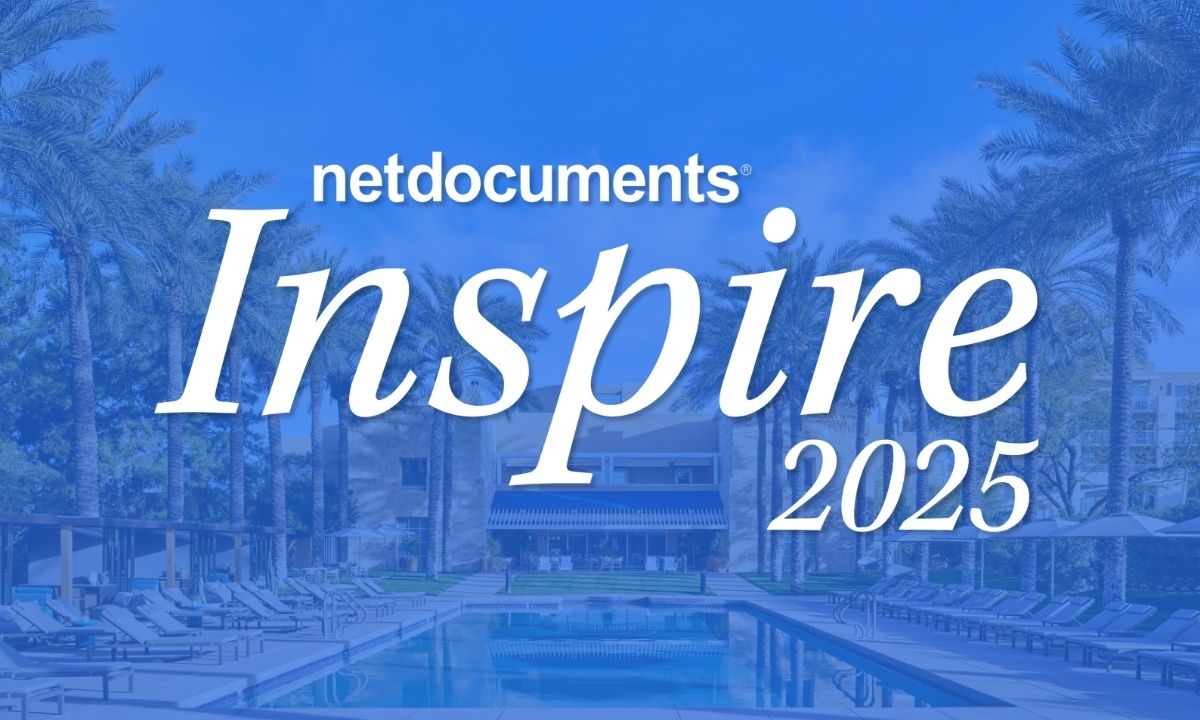
Blog
Everything Law Firms and Legal Teams Need to Know About Cloud-Based Document Management

“You can’t fight gravity.” That’s what Andy Jassy says about moving to the cloud. And as the guy who’s taking the Amazon CEO reins from Jeff Bezos, he knows a thing or two.
But for law firms and corporate legal teams, adopting cloud-based tools is easier said than done. With the constant deluge of competing demands most lawyers and in-house counsel face, you might be thinking, Can any software actually make a difference?
Our answer: absolutely. But we don’t expect you to take our word for it.
Instead, we aim to give you all the information you need to decide whether cloud document management is right for your organization or team, including:
- Answers to the most frequently asked questions
- Common cloud misconceptions — and why you shouldn’t believe them
- Key advantages your team can gain from cloud document management
- Top tips for identifying the right cloud provider
Ready? Let’s get started.
What is cloud-based document management?
Generally speaking, document management systems (DMS) refer to the tools and processes your organization uses to store and manage documents. Historically, companies have used on-premises systems, file shares, and event heir email inboxes to locate, organize, and share important documents.
Unfortunately, these outdated and ad hoc approaches often lack the security, functionality, and ease-of-use that modern business users need.
But thankfully, there’s a better way.
Cloud-based document management for law firms and legal teams offers the best of both worlds: robust productivity-boosting tools paired with increased security and governance controls.
What is the difference between cloud-based and ‘on-prem’ document management solutions?
Before we go any further, it may help to clarify the difference between on-premises solutions and cloud document management.
The key difference between these two types of systems is that on-prem solutions require you to purchase and maintain in-house server hardware, software licenses, security systems, and IT personnel. You have control (and responsibility) over every component.
Cloud solutions (a.k.a. software-as-a-service, or SaaS) take care of the heavy lifting for you. There’s no hardware or software to purchase. Instead, you pay monthly user fees to the cloud provider and access the DMS platform via the internet. You also have the advantage of a dedicated support team, rather than relying on your internal IT resources.
But be warned: Some “cloud DMS” platforms are actually on-prem document management systems in disguise. Make sure you understand the core architecture behind any document management solution you consider.
Is the use of cloud computing in law ethical?
Given the often confidential nature of legal work, you may be wondering whether it’s even ethical for in-house counsel and other legal professionals to use third-party cloud providers. In fact, this is such a hot topic that Bar Associations and Law Societies within the US and around the world have issued ethics opinions on cloud computing.
While some skepticism is understandable, the reality is that cloud solutions can be used as long as you do the appropriate due diligence and find a provider that complies with your ethical duties.
Common misconceptions about cloud document management
Although cloud-based software is quickly becoming the norm for most businesses, there are still some common misconceptions that keep law firms and legal teams from claiming all the benefits that cloud document management can offer.
Myth #1: The cloud is less secure.
Just because it’s called ‘the cloud’ doesn’t mean it goes soft on security.
In fact, cloud document management can actually be more secure than on-premises solutions. Part of the reason for this is that cloud providers are strongly incentivized to keep customer data secure by building robust security features into the platform and responding quickly to bugs and emerging threats.
Cloud-based document management solutions can even offer geo-aware content storage for organizations with local information residency requirements.
Myth #2: Cloud-based document management is too expensive.
We get it: switching to a new system might seem like a big investment. But the truth is, not switching to the cloud could be even more costly.
Physical document management is surprisingly expensive when you add up all the costs of paper, printers, ink, scanners, folders, filing cabinets, storage space, and more. On-premises solutions accrue similar expenses for system setup, hardware, software licenses, maintenance, and physical storage. (And don’t even get us started on the costs of a data breach.)
With cloud-based document management, on the other hand, your setup and ongoing costs are actually much less expensive. There may be some one-time implementation fees, but monthly user fees remain quite predictable. And with the cloud’s advanced security, you’re far better protected against a data breach.
Myth #3: The cloud won’t be as important when the pandemic is over.
Most law firms and corporate legal teams had to adapt to remote work during Covid-19. But some firms question whether remote work and the tools that enable it have earned a permanent place in the ‘new normal.’
Let’s just be perfectly clear on this one: Remote work is here to stay. Flexible work is a top priority for in-demand professionals, and especially for the growing younger workforce. It’s a perk you can’t afford to drop.
What benefits does cloud-based document management provide?
Now that we’ve cleared up any misconceptions about cloud document management, it’s time to turn to the good stuff — those big cloud benefits that help law firms and legal departments shine, like:
- Boost productivity. Document management systems are designed to help you get more done, faster. With special tools that help reduce administrative tasks, streamline workflows, and simplify communication, cloud-based document management systems help legal teams be more productive.
- Enhance security. Keeping confidential information secure is a top priority for corporate legal teams. The advanced security capabilities of the cloud make it easy to protect your documents and data.
- Anywhere access. Work doesn’t just happen in the office. With cloud document management, you can access important files from anywhere, on any device.
- Scale easily. Expanding storage capacity and adding users can be complicated and costly for on-premises systems. But cloud-based platforms allow you to scale to exactly what you need — no more and no less.
- Effective collaboration. Modern cloud DMS solutions give you the tools to securely collaborate with vendors, business clients, and external counsel — without using a third-party storage solution or extranet.
- Inherit innovation. When you use a cloud-based document management solution, your software instance receives automatic updates and improvements — whether your team has a handful of users or thousands.
What problems does cloud document management solve?
Cloud document management isn’t just about adding new benefits. It’s also about solving problems and getting more value from your time, money, and resources. Consider the following:
Save Money
Not only can the cost of a cloud DMS be lower than maintaining your legacy solution, it can also help your company save money in many other ways.
For a leading biotech company, their outdated DMS was more of a burden than a benefit: “Our old software… [created] indirect costs of lost time and effort that were intolerable and we had to make a change,” explained the company’s SeniorCorporate Counsel for Contracts.
When the team made the shift to cloud-based document management, it brought greater efficiency and ease-of-use — saving them significant time and effort on a daily basis. “[It] has taken us into the modern world where our legal department can really shine.”
See how other legal departments leverage cloud document management.
Maintain Governance
One of the greatest concerns for law firms and corporate legal teams is mitigating risk. Fortunately, cloud-based document management systems can help you guard and direct the flow of information in your organization.
With granular user access controls, ethical walls, native extranets, and data loss prevention, legal teams can prevent confidential files from falling into the wrong hands — whether you’re working with internal or external users.
Stay in Sync
When your approach to document management isn’t well-established, it’s far too easy for your team to end up with multiple file versions floating from inbox to inbox. It can be confusing and time-consuming to track down the right document and reconcile it with other versions.
But with cloud-based document management, all of your documents live in one place, which means you have a single source of truth that you can always rely on. And you never have to worry about which version is the right version, because they all get tracked in the system.
Build Legal’s Reputation
It’s sad, but true: in-house legal teams tend to get the short end of the stick. Despite being spread thin with demands from across the business, they’re still often seen as no more than a ‘necessary evil.’
Believe it or not, cloud document management can help. By increasing efficiency and productivity, legal teams gain bandwidth to support strategic initiatives and create bigger wins for the business.
How can a legal team ensure they’re getting the best cloud document management system?
Once you’ve made the decision to switch to the cloud, you want to make sure you get it right the first time. No one wants to go through a complicated implementation process, only to discover that you’ve chosen a solution that doesn’t fit quite right.
Here are three of our top tips to help you:
- Ask the right questions. The legal tech market is swamped with solutions, but not all DMS platforms are created equal. These 26 questions will help you identify the right provider — and eliminate the wrong ones.
- Prepare for common challenges. Change management can be tough, especially with a core system like your DMS. But if you prepare for potential roadblocks in advance, you’ll be able to handle them more effectively.
- Look for a legal-centric solution. Given confidentiality requirements and legal duties, it’s important that you have a solution that can meet your needs.
Get to Know the Cloud
Want to solidify your understanding of the cloud? Check out our recent webinar, What Is the Cloud Anyway?, featuring cloud experts Kelly Plunkett and Scott Barnhill. In this presentation, they break down the foundational elements of cloud technology —and how it can advance your team’s competitive advantage.
Explore these other blogs
-

- Blog
2026 Legal Tech Trends
Michelle Spencer Lead Technology Strategist The legal industry hit a defining…
-

- Blog
Inspire 2025 Recap: Powering the Intelligent Legal Platform
Josh Baxter CEO, NetDocuments Every October and November, we gather for…
-

- Blog
Inspire 2025 Phoenix Day 3 Recap: NetDocuments AI Search Makes Its Debut
Michael Owen Hill Director of Product Marketing Another successful NetDocuments Inspire…
-

- Blog
Day 2 Recap from Inspire Phoenix: Innovation Where Great Legal Work Happens
Michael Owen Hill Director of Product Marketing Day two of Inspire…
netdocuments


